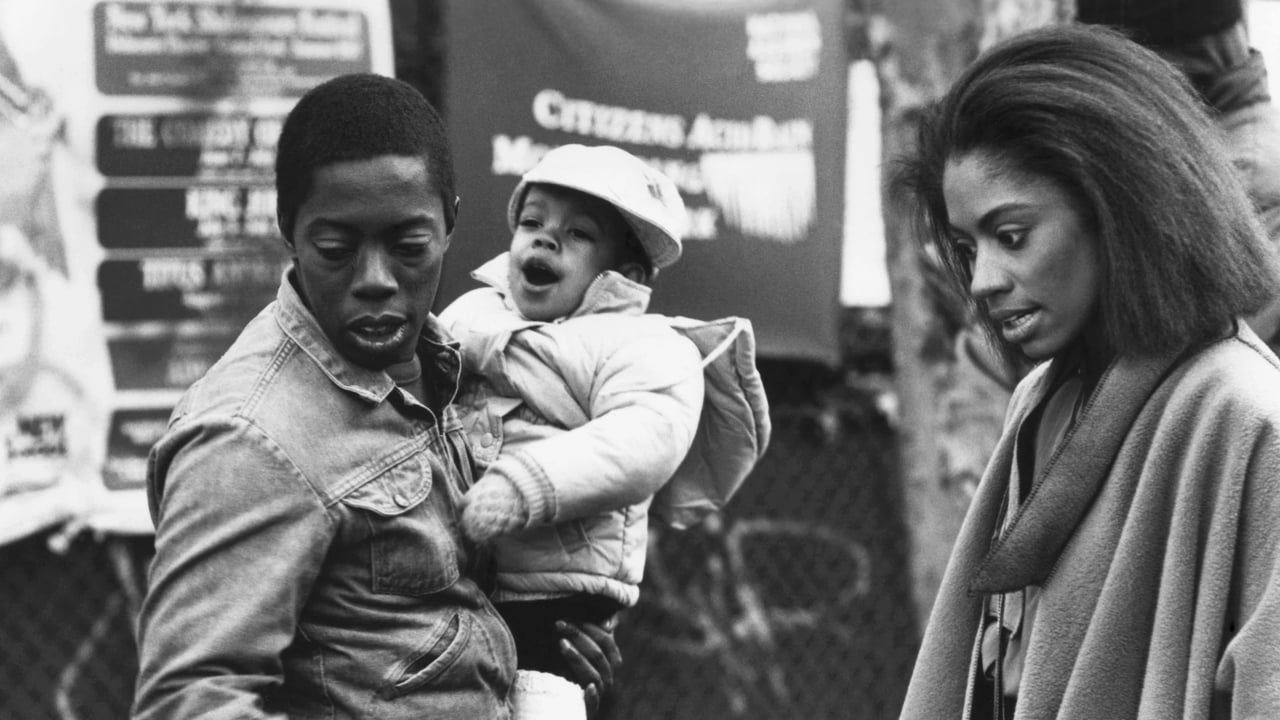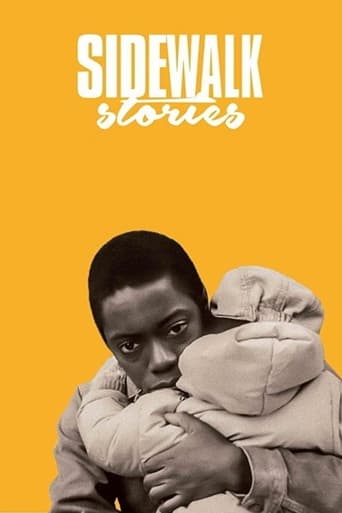

I've often heard the name Charles Lane spoken as the great new independent director, an artist to rival the best of the golden age, and I am shocked to find that he has only made two feature length films. "Sidewalk Stories" alone is enough to place him among the great creative legends who turned pathos into art and gave the audience his heart in return. Here, he plays a gentle homeless man, making few dollars a day with his sketches, then sneaking into an abandoned park structure at night to sleep. Lane has an angel like presence as his sweet natured character is often used and abused, taken advantage of, and ultimately pretty much sacrifices everything for a little girl. There's a combination of Chaplin and a modern street tough sensibility in this film as Lane (combination writer, director and star) makes this identifiable to modern audiences as well as touching the hearts of classic cinema fans still craving the Charlie Chaplin like sentimentality.The best moments are often the smallest, including a scene where Lane must shoplift to get some clean clothes for his little charge. The big hearted store owner is amused and touched by his obvious affection, and in turn takes surprisingly heartfelt steps. It's not ripping off "The Kid", but giving a modern twist on it that hopefully inspires young artists to look back at the classics that made film what it is today. Filming it silent (except for a fitting musical score) and black and white makes it all the more touching. A scene in a park further down Sixth Avenue shows Lane dealing with some uppity white women in a most amusing manner. A brief gratuitous bit of sex seems out of place, but it's simply another effort to modernize what Chaplin couldn't get away with in the 1920's and 30's. Don't confuse all of Lane's roles in this as Ed Wood like ego in being another Chaplin or Orson Welles. If he didn't have the chops, he would not have been so successful at getting this done as well as it was. The West Village 6th Avenue location shoot (just around the corner from Washington Square) is ironic for me, having seen a double bill of Chaplin nearby at the film forum where this has been re-screened with Mr. Lane present, making this now a modern cult classic. Nicole Alysia (Lane's real daughter) adds to the charm of this film, so adorable and sweet as the little girl who comes to depend on him.
... View MoreI had wanted to see "Sidewalk Stories" ever since I read a rave review of it from Roger Ebert over twenty years ago. But for some reason, the movie never got a release on video (at least in North America) right after its theatrical release. And when it finally got released on DVD a couple of years ago, all the video stores were gone. Fortunately, thanks to Turner Classic Movies, I finally got to see the movie, and it was well worth the wait. It's a brave movie, not only being a silent movie in black and white, but also that there are no title cards to tell us what the characters are saying or doing. There are a couple of moments when some written text would have cleared up things a little, but otherwise the movie is all the same very easy to follow. Charles Lane clearly boned up on the movies of Charlie Chaplin and Buster Keaton, because the movie really has the feel of many of those classic comedians' movies - though interestingly, Lane's movie is mostly serious in tone instead of being more comic. (Though there are some genuinely humorous moments here and there.) And while its main intent is to entertain, Lane does manage to make some effective statements on homelessness. A sex fantasy sequence does seem out of place, and the final scene - where we finally hear dialogue - also was a misguided touch. But apart from those minor quibbles and a few others, "Sidewalk Stories" is an independent film triumph that you'll remember for a long time.
... View MoreI have known about and been wanting to see this gem ever since I looked at various movie sites that mentioned it over a decade ago. I read about it and the details concerning this made me interested in it and wanted so badly to see it. Another reviewer of this on here typed that he caught it on PBS and aired on that channel, let alone any other, only once and for some dumb, jacked-up reason, I know that it was released on VHS in Germany, but never in the U.S. and to date, it still hasn't been brought to DVD either. And since learning about the Youtube site that was founded and established a few years back, I kept checking back the search engine on the site to see if anyone posted it on there. Every time I did, there was no copy uploaded unfortunately. That is until a few months ago. I found it after searching once again on there a couple months after it was posted (which took long enough) and it's about time. Finally, at last. I thought I was never going to get to see it, since it's been so difficult to find a copy of the full movie online (although prior to that, I came across a clip of the feature on the same video site). Following watching it for the first time, I got to say I loved and enjoyed it a lot, just as I thought and knew I would.Although Mr. Lane had already made a short film prior to this one over a decade earlier called A Place in Time as a film school project and assignment, this obscure, full-length, follow-up may be the better known for the two and for which he's best renowned. This must be the only, old-timey, black and white, (mostly) silent film shot in the second half of the 20th century (or at least, the only one that I know of anyway), because I haven't discovered any others. And if there really aren't, that's disappointing, because I'd love to see more filmmakers do something like this and again. Anyway, this movie is a throwback to the pre-colorized, pre-talkie kind of flicks. Lane's character, The Artist, is truly Chaplin's The Tramp-inspired and he captures that inspiration well. The Artist's life change when he happens to come across witnessing a robbery one night and a man is murdered, leaving his baby daughter (who happens to be Lane's real life daughter) an orphan. The Artist takes it upon himself to be her temporary guardian. We follow the adventures and misadventures they have as they journey around Greenwich Village, New York until he finds the mother and reunites the baby with her. The soundtrack in this is just as great. Early on, this takes a look at the wide array of denizens who live on the streets, but that situation isn't quite the made focus. If none of y'all who may be reading my review have ever seen a b&w, silent flick, then I advise y'all to do so. I know it captivated me the first time I saw it instantly. I hope someone else will do something like this in the future and I'd look forward to it.
... View MoreIt takes a lot of nerve to update a classic silent comedy, and do it again as a silent film, but that's the idea behind this Reagan-era remake of the 1921 Chaplin comedy 'The Kid'. Writer/producer/director Charles Lane himself takes the Little Tramp role, playing a homeless New York City street artist who reluctantly adopts an abandoned toddler (in real life Lane's own daughter). Both have big shoes to fill, Lane most of all because, unlike Chaplin, he isn't exactly a creative genius, and his attempts at visual comedy are never more than mildly amusing, at best.But silence is golden, and more to the point for a struggling independent filmmaker, it can be economical as well. By muting the voices on screen Lane succeeds in muting the harsh impact of poverty, bringing some charm to what could have been a merely depressing backdrop. So why introduce the panhandler's begging voices in the final scene, when their faces alone would have been eloquent enough? It amounts to thematic overkill in an otherwise engaging novelty (if not much else), with a likable underdog as its director and star.
... View More